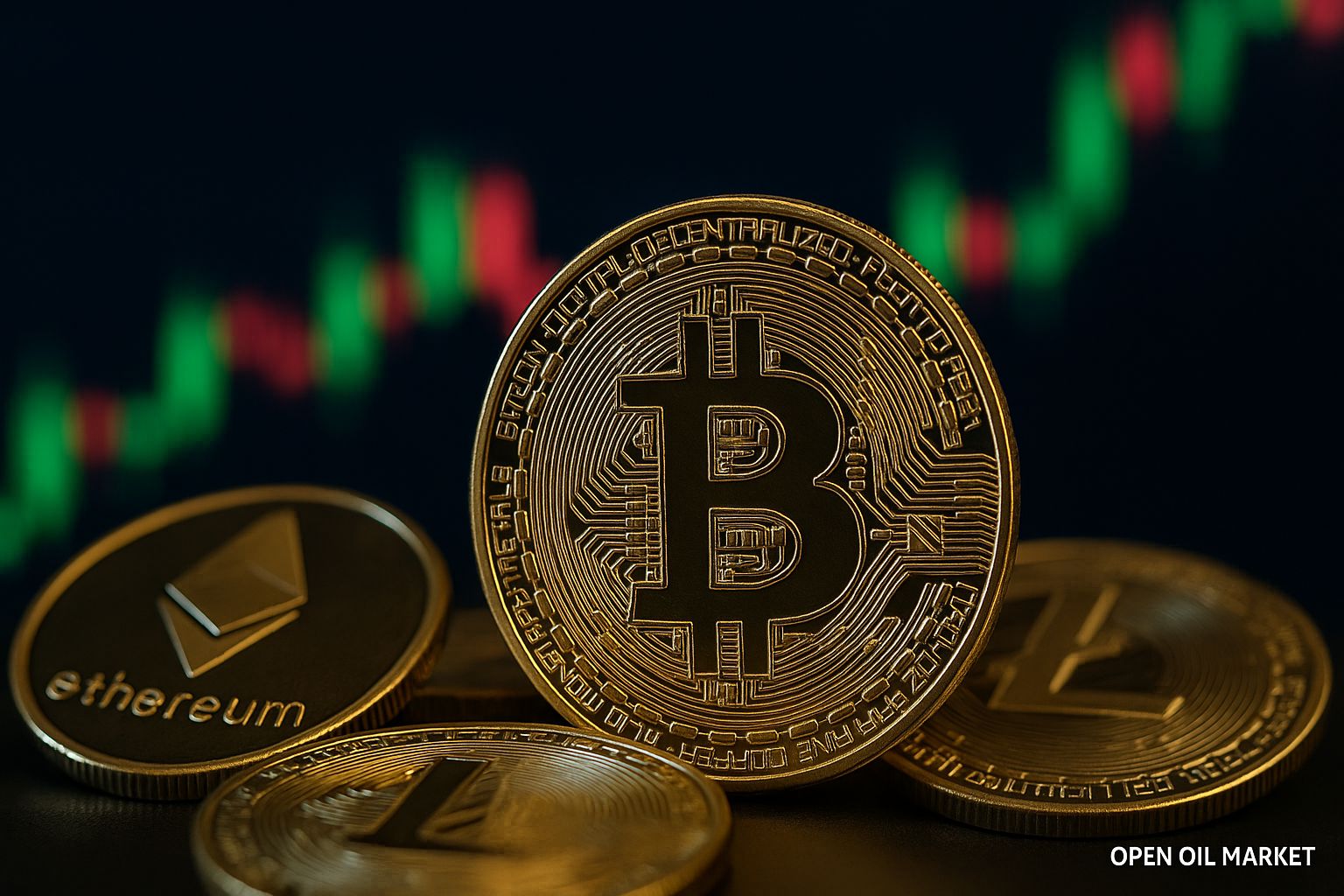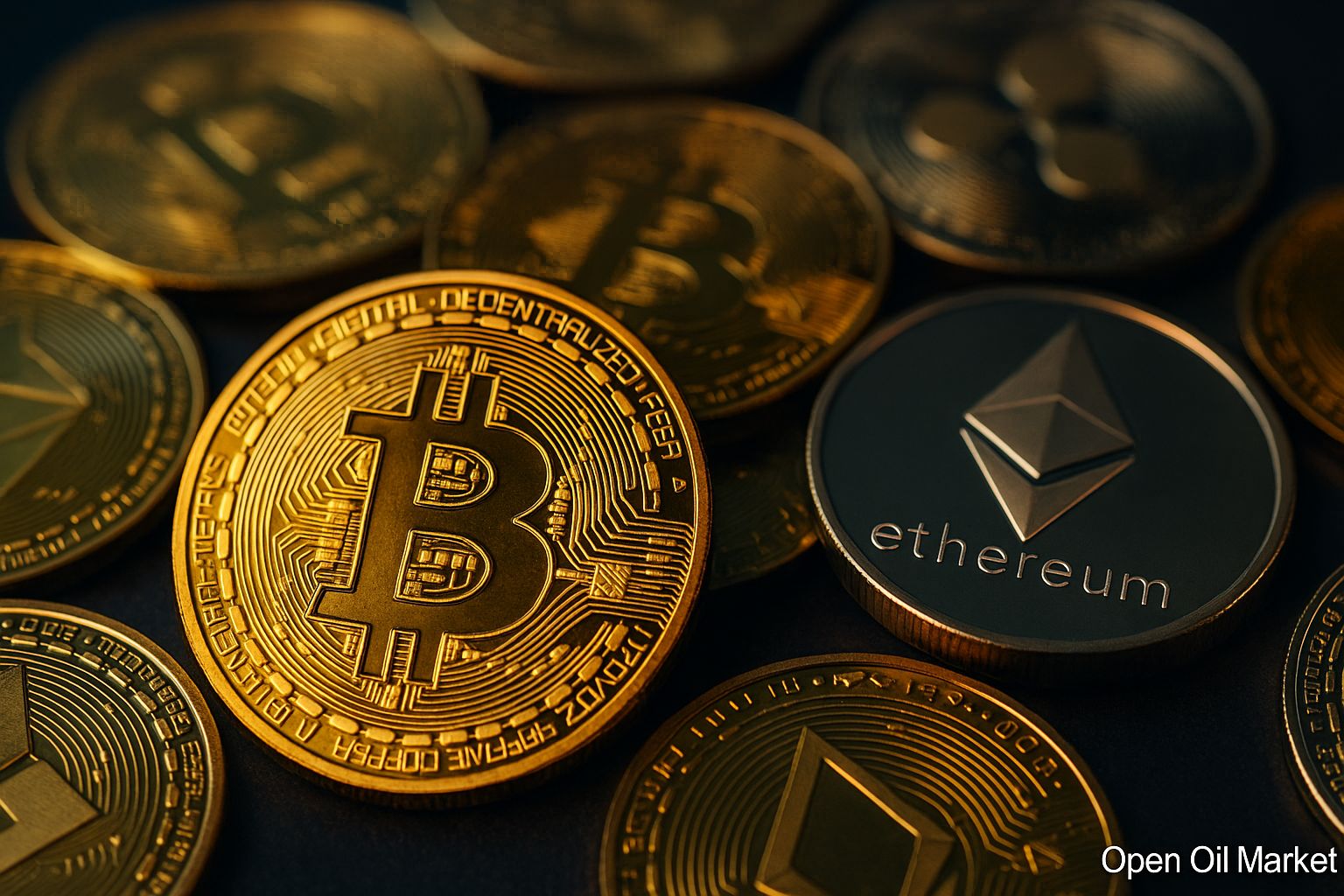
Current Cryptocurrency News as of August 10, 2025: Bitcoin Stays Above $116,000, Ethereum Surpasses $4,000, Altcoins Set New Records, Regulators and Institutional Investors Intensify Market Influence.
The cryptocurrency market on August 10, 2025, maintains a strong position following a rapid rally in recent weeks. The total capitalization of digital assets hovers around record levels (approximately $3.8 trillion), and investor sentiment remains optimistic: the fear and greed index is still in the "greed" zone. Even short-term corrections do not weaken the upward trend, as major players buy the dips, supporting the market. Below, we review the key events and trends in the crypto industry that are essential for investors to know.
Cryptocurrency Market: Upward Trend Persists
After impressive growth this summer, the cryptocurrency market is consolidating around the achieved peaks. Bitcoin and other leading coins are holding onto most of their recent gains, and volatility remains moderate. Bitcoin's share now accounts for about 60% of the total capitalization, highlighting its dominance, but altcoins also significantly contribute to the rally. Macro-economic factors bolster the market: expectations of a decline in interest rates in the U.S. as early as September increase the appetite for riskier assets and weaken the dollar, which benefits cryptocurrencies.
Regulatory certainty in key markets and inflows of institutional capital further strengthen the sector. In 2025, several historic steps (such as the launch of the first spot crypto ETFs) signaled a transition of the industry to a more mature stage. Many investors, inspired by these changes, are increasing their investments in digital assets, anticipating further market growth.
Bitcoin Holds Record Positions
Bitcoin (BTC) confidently remains at a peak: the price of the first cryptocurrency consistently exceeds $116,000 this week. In July, BTC set a new all-time high, surpassing $123,000, followed by a slight correction. Currently, Bitcoin is consolidating in the $115,000–$118,000 range, demonstrating remarkable resilience even at these heights. Recently, positive news from the U.S. provided market momentum: President Donald Trump signed an executive order allowing the inclusion of crypto assets in 401(k) retirement plans. On the wave of this support, the BTC price briefly surged to nearly $118,000 before retracting to current levels.
The significant growth of Bitcoin in 2025 has been fueled by fundamental factors. In the spring, the Bitcoin halving occurred, limiting the supply of new coins. Simultaneously, institutional capital flooded into the market due to the approval of spot Bitcoin ETFs, providing major investors with convenient access to cryptocurrency. Analysts generally assess BTC's outlook positively: several forecasts suggest a target of $150,000 by the end of the year (though bolder estimates cannot be ruled out). Naturally, high volatility persists, and any serious shocks could lead to pullbacks. Nonetheless, the long-term trend stays upward, and many investors adopt the "buy the dip" strategy, planning to purchase Bitcoin during price declines in anticipation of further growth.
Ethereum Rises Amid Demand for Altcoins
Ethereum (ETH), the second-largest cryptocurrency by market capitalization, continues to strengthen. This week, the price of ETH confidently surpassed the psychologically important threshold of $4,000, reaching its highest levels since 2021. Ethereum benefits from the booming development of the decentralized finance (DeFi) ecosystem and non-fungible tokens (NFT): increased activity in these segments heightens demand for Ether as a foundational asset. Additionally, the Ethereum community is successfully implementing network upgrades, improving scalability and blockchain efficiency, thus boosting user confidence.
Institutional interest is also spreading to Ethereum. Investors are pouring record amounts into funds and ETFs focused on Ether, seeing it as a fundamental platform for smart contracts. As a result, Ethereum significantly outpaced Bitcoin in growth rates in 2025 (the price of ETH doubled over the past year) and is closely approaching its all-time high ($4,800). Many analysts believe that if current trends continue, Ethereum could set new records, although it will need to break the resistance level around $5,000 to do so.
Altcoins: Leaders in Growth and New Heights
In the altcoin segment, several major coins are experiencing accelerated growth. Special attention is being drawn to XRP—the token of the Ripple payment network. The price of XRP soared in July after Ripple's legal victory over the SEC, which provided the token with much-awaited regulatory clarity. XRP currently holds around $3.20, marking a high since 2018. Another notable coin is Binance Coin (BNB): the native token of the largest exchange, Binance, trades around $800, close to its all-time peak. Despite past regulatory challenges, the expansion of the ecosystem (exchange, BNB smart chain, and numerous projects) supports demand for BNB and drives its price upward.
Among platform cryptocurrencies, Cardano (ADA) shows steady strengthening. The ADA token reliably remains in the top ten; however, its current price (~$0.80) significantly lags behind historical highs—investors are awaiting further technical improvements based on the scientific approach chosen by the Cardano team. Solana (SOL) has made an impressive comeback: the high-speed blockchain that experienced a downturn in 2022 has once again emerged as a market leader. SOL rose to $180, strengthening its position through technical innovations and renewed trust from users and developers. "Meme" cryptocurrencies aren't lagging behind either: Dogecoin (DOGE) trades around $0.24, gaining approximately 5% over the past day. The rise of DOGE is supported by community activity and periodic surges of interest on social media, reminding us that speculative enthusiasm in the market remains strong.
Regulatory Initiatives Worldwide
Cryptocurrency regulation continues to evolve, creating clearer rules for investors and companies. Important steps are being taken to integrate digital assets into the legal framework in various countries:
- U.S.: The U.S. Administration demonstrates a more lenient approach towards the industry. Recently, an executive order was enacted, allowing cryptocurrencies to be included in retirement savings (401(k)), expanding public access to digital assets. Regulators are also considering applications for launching new crypto ETFs, and the market anticipates potential approval of a spot Ethereum ETF in addition to existing Bitcoin funds.
- European Union: This year has seen the implementation of the comprehensive MiCA regulation in EU countries, establishing unified rules for the cryptocurrency market. The new licensing and oversight regime enhances the transparency of crypto companies’ operations and strengthens investor protection. These measures channel capital into legal frameworks and bolster Europe’s position as a center for the crypto industry.
- Asia: Regulatory approaches in Asia are varied. For instance, Hong Kong introduced licensing for crypto exchanges and stablecoin issuers in August, striving to become a regional crypto hub. In contrast, mainland China maintains a strict stance: during the summer, regulators urged brokers to cease promoting stablecoins, viewing them as a threat to financial stability. Other countries in the region, such as Japan and South Korea, are gradually opening markets to cryptocurrencies while emphasizing risk control and investor protection.
- Russia and CIS: In Russia, direct cryptocurrency circulation remains limited by law, but interest in the industry is growing. In 2025, the country retains the second position globally in Bitcoin mining scale (over 20% of global hash rate), having officially recognized mining and created a register of major miners. Concurrently, financial organizations and lawmakers are discussing the launch of experimental legal regimes for cryptocurrency transactions and trading platforms. Although final regulation is yet to be adopted, these initiatives indicate movement toward legalization in CIS countries.
Despite different approaches, the overall trend worldwide is shifting towards legalization and transparency. The crypto industry is gradually emerging from the "gray zone" and gaining official recognition. This raises trust among major financial players and creates a foundation for stable market development in the long term.
Institutional Participation Intensifies
Major investors and corporations continue to increase their presence in cryptocurrencies. Banks and investment firms are launching an increasing number of products based on digital assets, ranging from crypto funds to custodial services. In the U.S., leading Wall Street financial firms have filed numerous applications for spot ETFs on various cryptocurrencies, and existing funds are recording a historic influx of capital. For instance, Grayscale and BlackRock funds attracted billions of dollars in new investments amid rising prices, signaling robust interest from traditional institutional players.
Corporations are also actively participating in the market. The well-known company MicroStrategy, one of the first to start accumulating Bitcoin in its reserves, reported a profit of about $10 billion in the second quarter from Bitcoin's price increase. The firm is now planning to raise another $4 billion through stock issuance to increase its crypto assets—an exemplary case of an enterprise’s long-term faith in Bitcoin. Other publicly traded companies, including several tech giants and retail chains, also hold cryptocurrencies on their balance sheets or accept them as payment. Additionally, traditional banks are exploring blockchain applications: for example, Bank of America is testing the use of stablecoins to expedite international transfers. The influx of "smart money" from institutions and corporations makes the market more resilient and gradually reduces the influence of purely speculative factors on prices.
Top 10 Most Popular Cryptocurrencies
Despite the existence of thousands of digital coins, investor attention is primarily focused on a few major assets. Below is the updated list of the top 10 cryptocurrencies by market capitalization as of today:
- Bitcoin (BTC) — the first and largest cryptocurrency, often referred to as "digital gold." Bitcoin remains the primary market benchmark and has recently set a new price record, reinforcing its status as a reliable asset in the eyes of investors.
- Ethereum (ETH) — the second-largest cryptocurrency by market capitalization and leading platform for smart contracts. Ethereum is the foundation for most decentralized applications (DeFi) and NFT services, continuing to strengthen its position through ecosystem development and technical upgrades.
- XRP (Ripple) — the token of the Ripple payment network for fast international transfers. XRP has surged significantly in price amid positive regulatory shifts and Ripple's legal victory over the SEC, returning to levels unseen since 2018.
- Tether (USDT) — the largest stablecoin pegged to the U.S. dollar at a 1:1 ratio. USDT is extensively used by traders for value retention amid market volatility and serves as one of the primary sources of liquidity in crypto trading.
- Binance Coin (BNB) — the native cryptocurrency of the Binance exchange and its blockchain ecosystem (BSC/BNB Chain). BNB is used to pay fees and participate in DeFi projects on the platform; the token's price has significantly increased alongside the expansion of the ecosystem and user base.
- USD Coin (USDC) — a popular dollar stablecoin issued by a consortium of companies, Circle and Coinbase. USDC is known for its transparency in reserves and regulatory support, enhancing market trust.
- Cardano (ADA) — a cryptocurrency and blockchain platform evolving based on a scientific approach (formal research and Proof-of-Stake algorithm). ADA reliably remains in the top ten, drawing attention from developers and long-term investors, although its price remains below historical highs.
- Dogecoin (DOGE) — a well-known "meme cryptocurrency" originally created as a joke. Thanks to its active community and the support of influential entrepreneurs (especially on social media), DOGE continues to attract demand and remains one of the largest digital assets by market capitalization.
- Solana (SOL) — a high-speed blockchain for scalable decentralized applications. Solana made its way back into the top ten, solidifying its position through technical innovations and increased investor trust after overcoming past challenges.
- TRON (TRX) — a platform for smart contracts and decentralized services, particularly popular in Asia. The TRX token retains its position among leaders largely due to its active use in stablecoin transactions (USDT in the Tron network) and a wide ecosystem of applications.
Widespread Adoption of Cryptocurrencies: Growing Trust
In 2025, cryptocurrencies are making significant strides into the mainstream, accompanied by growing trust from society. The number of market participants—both institutional and individual—has substantially increased amid the bullish trend. Millions of new users worldwide are opening crypto wallets, attracted by the prospects of high returns and improved technology accessibility. Major payment platforms are integrating support for digital coins, and some countries are launching their own digital currencies (CBDCs), indirectly enhancing interests in public cryptocurrencies.
Thus, the crypto industry is entering a new phase of maturity. Historic price records, the influx of "smart money," and gradual regulation are transforming digital assets from a niche experiment into a fundamental element of the global financial system. Investors note that the rise in widespread adoption increases market liquidity and stability. If current trends continue, cryptocurrencies will strengthen their positions in the global economy, offering new opportunities for diversification and innovation.




